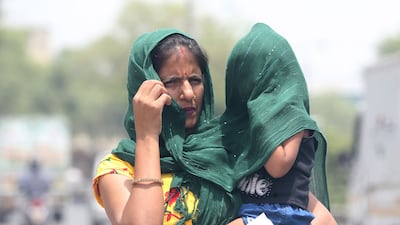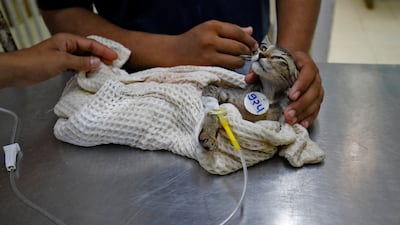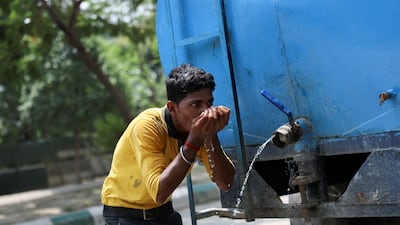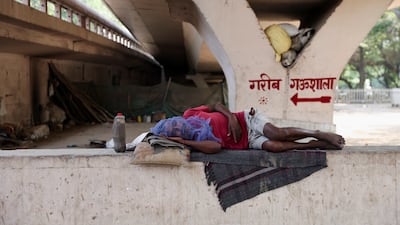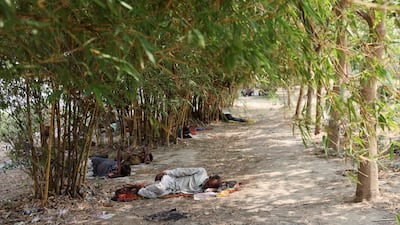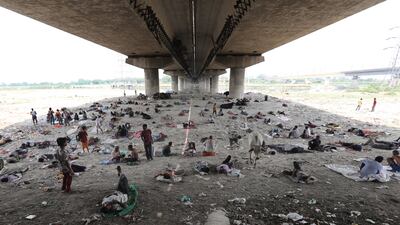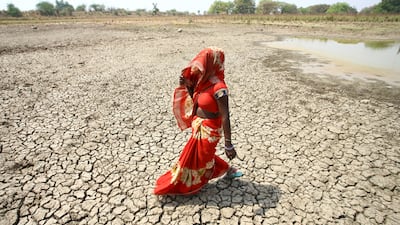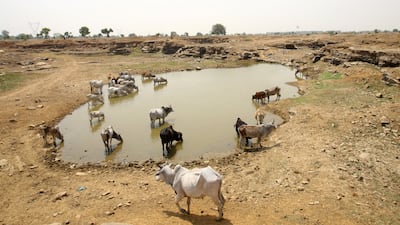India may struggle to reach development goals because heatwaves are going to become increasingly severe, say researchers.
The academics say that more than 90 per cent of the country faces possible effects on, for example, crop yields, the spread of disease and the ability of people to earn a living.
Within three decades, heatwaves in India could become so extreme that even sitting in the shade could prove fatal and outdoor workers are likely to become less productive.
“Long-term projections indicate that Indian heatwaves could cross the survivability limit for a healthy human resting in the shade by 2050,” the study stated, citing previous research.
Writing in the journal PLOS One, the researchers said there was an “urgent” need for the impact of extreme weather on India to be better assessed.
“Estimates show a 15 per cent decrease in outdoor working capacity (ie working outdoors in high temperatures, eg construction worker) during daylight hours due to extreme heat by 2050,” they wrote.
The study examines the deaths of 25 people when India experienced its hottest ever March and its hottest April for 122 years last year.
Since 1992, heatwaves in India have claimed more than 24,000 lives, the paper highlighted, with public health and the economy experiencing an “incredibly high” burden.
There are likely to be longer lasting and more frequent power cuts, increases in air pollution from dust and ozone, and the melting of glacier snow in India’s northern regions.
The first author of the study, Dr Ramit Debnath, of the University of Cambridge and the California Institute of Technology, said it was “highly likely” that the intensification of heatwaves in India would lead to greater loss of life.
“Mortality will increase, as well as loss of livelihood due to recurrent heatwaves,” he said. "[An] emphasis on securing protection from heat impacts for low-income communities, especially in urban areas is crucial and climate finance mechanisms can help.”
The risks could be better communicated to the population when dangers are greatest, such as through SMS alerts on mobile phones.
“The other important step is to ensure the outdoor/manual labour working force has some sort of adaptive capacity from high heat and outdoor working conditions,” Dr Debnath said.
He also said there were measures that could be taken to reduce the impact of urban heat islands, which are areas that tend to heat up more than surrounding areas.
Providing more green spaces, which he said were fast being lost in India, would make it easier to cope with heatwaves.
The intensification of heatwaves will, the researchers said, hamper India’s efforts to reach the United Nations’ 17 sustainable development goals, which were adopted by countries in 2015 with the intention that they should be achieved by 2030.
“The core implication of this paper is that … extreme weather events will intensify the adverse effects on productivity, health, and well-being, potentially slowing down SDG progress,” the researchers wrote.
The research highlights possible effects on a wide variety of goals, including achieving energy security, reducing inequality and improving public health.
The effects will not be felt uniformly across India. West Bengal, in east India, and Andhra Pradesh, in the country’s south, face “extreme danger”.
Delhi, the capital, will face particular challenges, because it has highly concentrated slum populations and overcrowding in especially hot areas.
Overall, more parts of the country will be at risk than suggested by the Indian government’s own assessment, based on its Climate Vulnerability Index, which the researchers said should incorporate a heat index that takes into account temperature and humidity.
“A central message is it’s high time to think about reforming/improving climate vulnerability impact measures, especially for the Indian subcontinent, where it is critical to build adaptive capacity now,” Dr Debnath said.
